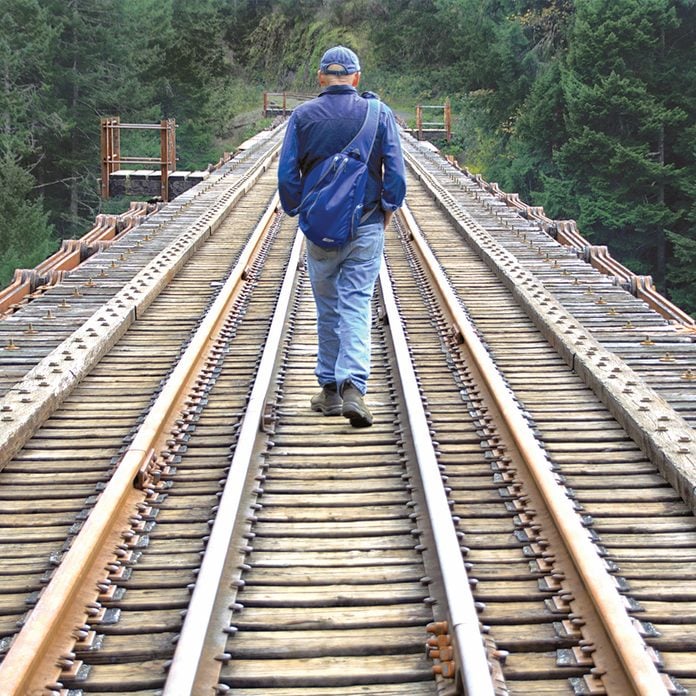
Walking the E&N Railway
They say that if you put your ear to the railway track, you’ll hear the sounds of the trains: the whistles, the hissing of the locomotives, and the clickety clack of the rail cars, past and present. My buddy Gar and I were walking along the E&N railway (Esquimalt and Nanaimo) track, on a long iron trestle that spans the Niagara Creek Canyon, just north of Victoria. I didn’t hear any trains coming, as the last train had passed over these rails in early 2011. The rail line was abandoned, and the grasses and blackberries have taken over. I kept looking over my shoulder, just out of caution, as the trestle we were on had no walking platform, no guard rails, and no place to escape if a train should come through.
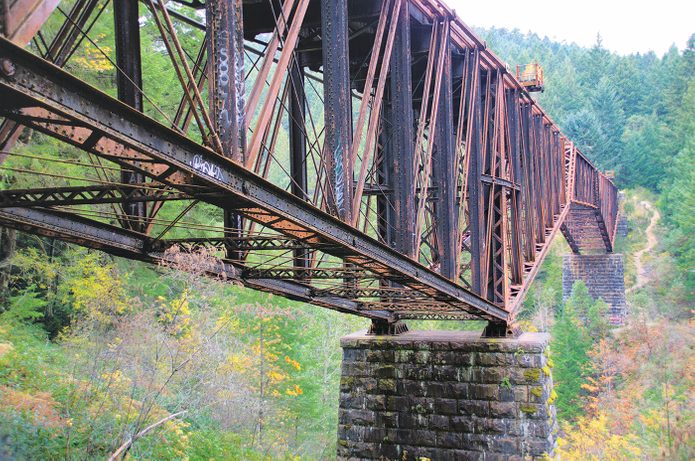
The Niagara trestle
The E&N Railway trestle we were on, a cantilever suspension bridge, has an interesting history. It was built in 1883 in England and shipped to Canada, where it was initially used as a crossing on the Fraser River. Later, in 1910, it was moved to Vancouver Island and reassembled in its current location. Today, it is still a majestic sight, but it sits silent, gently rusting in the spring rains as it waits for whatever is in store for this railway line.
Check out more beautiful bridges in Canada.
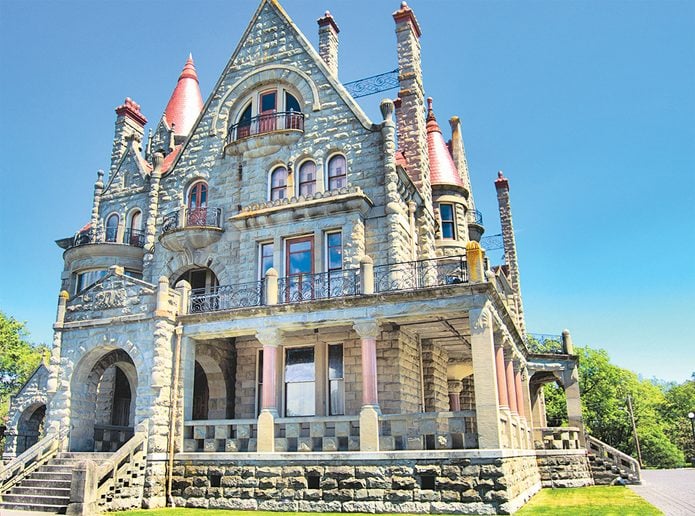
Founding the E&N Railway
One of the early promoters of the E&N Railway was Robert Dunsmuir, the Nanaimo coal baron and member of the provincial legislature. He was interested in owning the railway project, and the fact that Dunsmuir was a member of the provincial government that was making the deal aroused some suspicion about corruption. Nonetheless, the deal went through and in 1883 the British Columbia provincial government signed a contract with Dunsmuir to build a railway between Esquimalt and Nanaimo in exchange for a grant of land amounting to 323,749 hectares, plus a cash grant of $750,000 from the federal government.
Dunsmuir, by the way, is perhaps best known as the builder of Craigdarroch Castle (above) in Victoria in the late 19th century. It was to be a family residence for himself and his wife, Joan. He died, however, in April 1889, 17 months before construction on the castle was completed.
Did you know Craigdarroch Castle is rumoured to be one of the most haunted places in Canada?
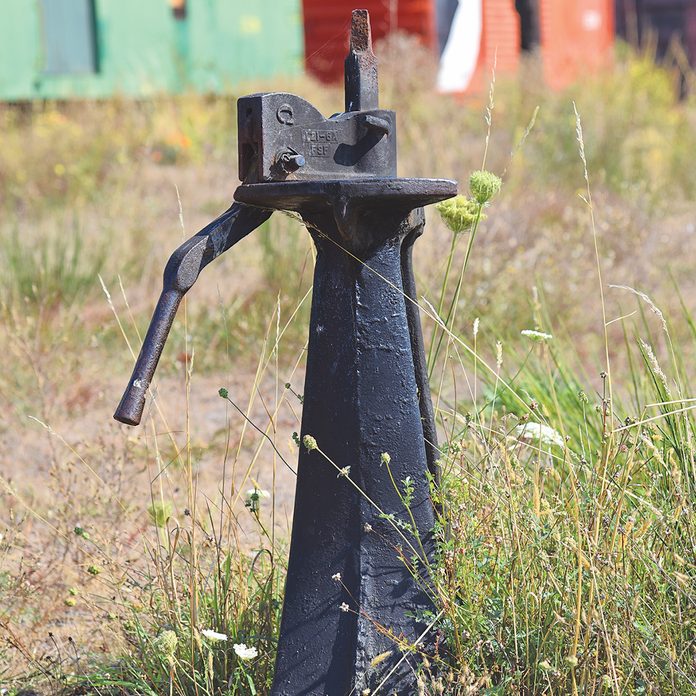
Lore and legend
But back to the railway. The story is that the last spike was gold and the hammer was silver. That may be a fact or just a yarn spun by the locals. On August 13, 1886 though, the last spike was driven at Cliffside, about 40 kilometres north of Victoria. Construction of the railway took just over three years. The Prime Minister at the time, Sir John A. Macdonald, drove the last spike during his only visit to British Columbia. The railway was extended to Dunsmuir’s coal mine at Wellington in 1887, and later into Victoria in 1888. It was extended west to Port Alberni in 1911, west to Lake Cowichan in 1912, and north to Courtenay in 1914. Plans calling for a further extension to Campbell River were put on hold indefinitely at the outbreak of the war in Europe.
Find out what it’s like travelling through the Canadian Rockies on a luxury train.
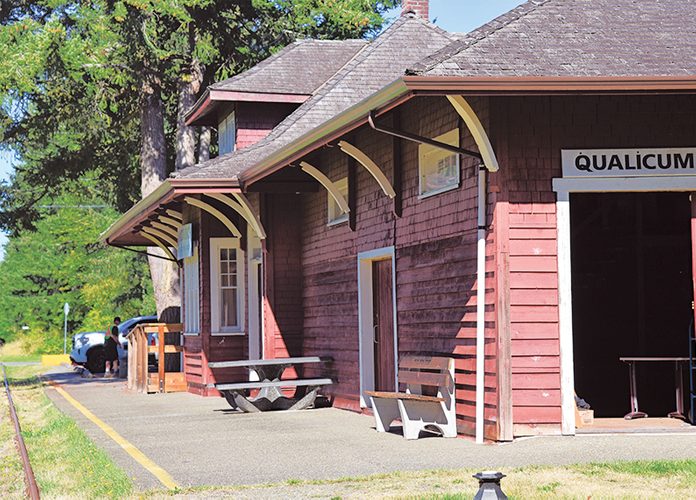
Next stop, Qualicum Beach
The completed railway was a blessing for the many small communities along its route. Settlements like Union Bay, Parksville and Chemainus were transformed into villages. Trains brought freight, mail and passengers. When train stations were built, they became community focal points, and local businesses and residents eagerly awaited freight and express shipments.
The information board at the well-preserved Qualicum Beach train station says “The arrival of the E&N Railway at Qualicum Beach and the construction of the Train Station in 1914 coincided with the development of the Qualicum Beach Hotel and golf links. These developments sparked the growth of Qualicum Beach from a sparsely settled area to a premier tourist destination.”
Check out these railway adventures for the Canadian history buff.
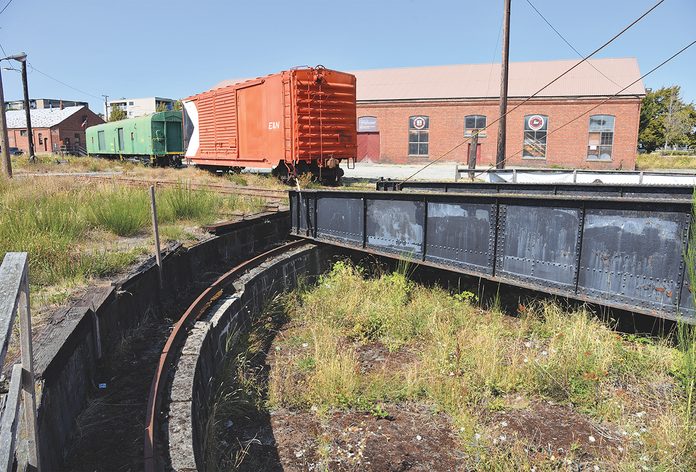
The end of an era
Rail traffic declined greatly after the Second World War, and the rail line and stations fell into disrepair. This was a sad state of affairs, as the small train stations had become important for contacts with the outside world by mail, telegraph or in person. Some small stations have been well preserved; others have been boarded up and painted over. A little collection of the rolling stock sits on sidings, paint slowly peeling away.
At the Victoria end of the line, the passenger station has long been removed and the lands developed for other uses. But just a few kilometres away, on the nearby Songhees lands, the remains of the original roundhouse and associated buildings are well preserved and form part of the register of Canada’s historic places. Currently under a development proposal, the roundhouse will be upgraded and preserved for future generations.
Now that you know the story of the E&N Railway, discover 10 unique train rides across Canada.